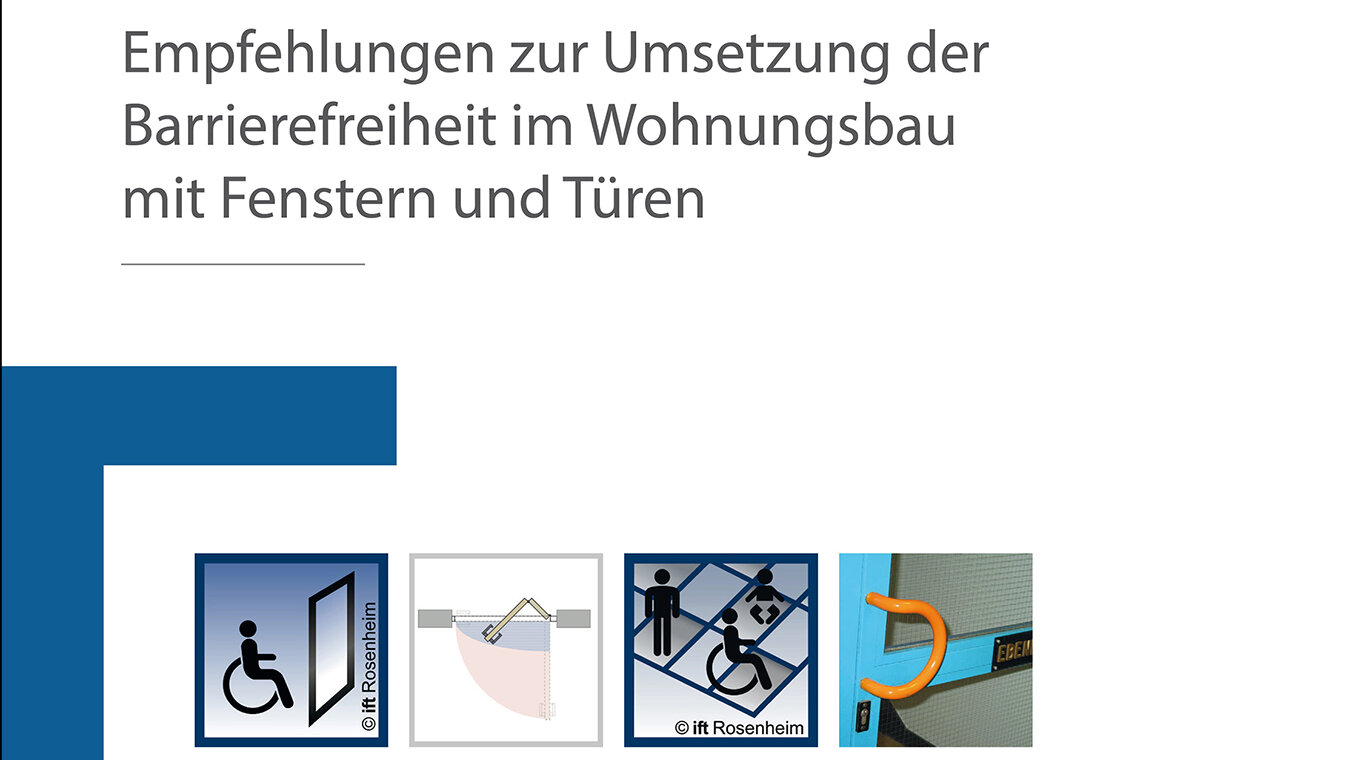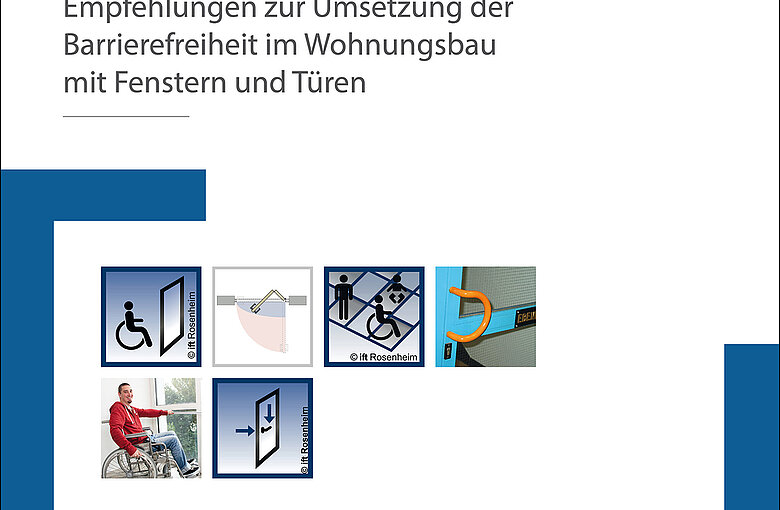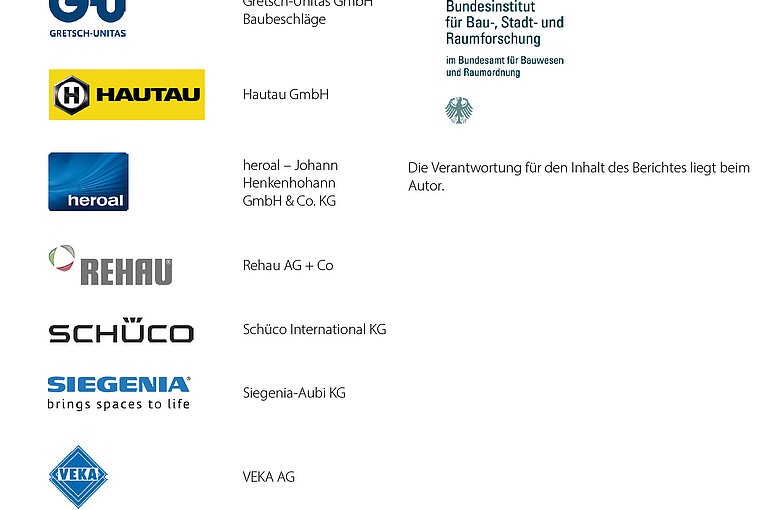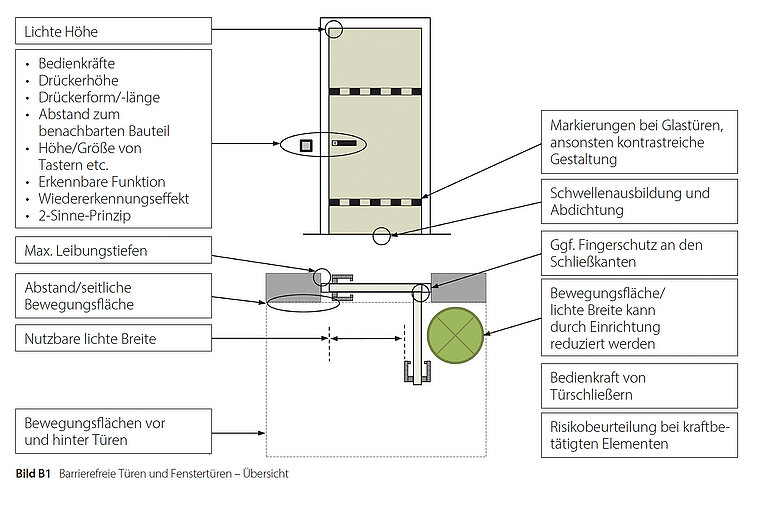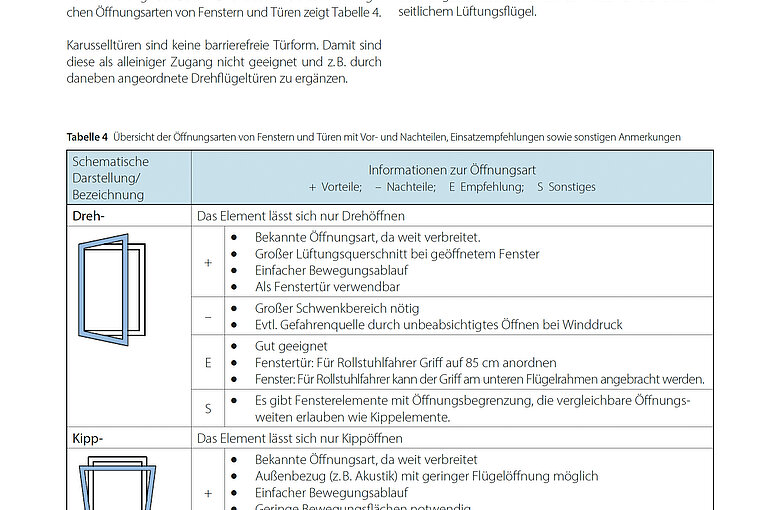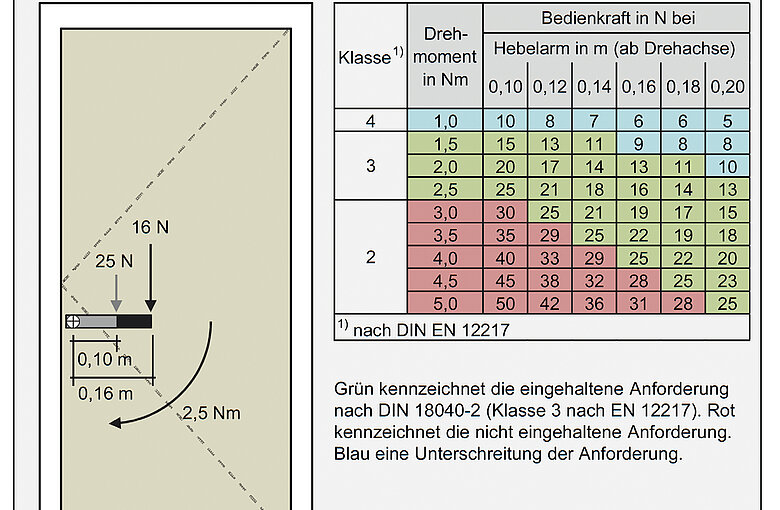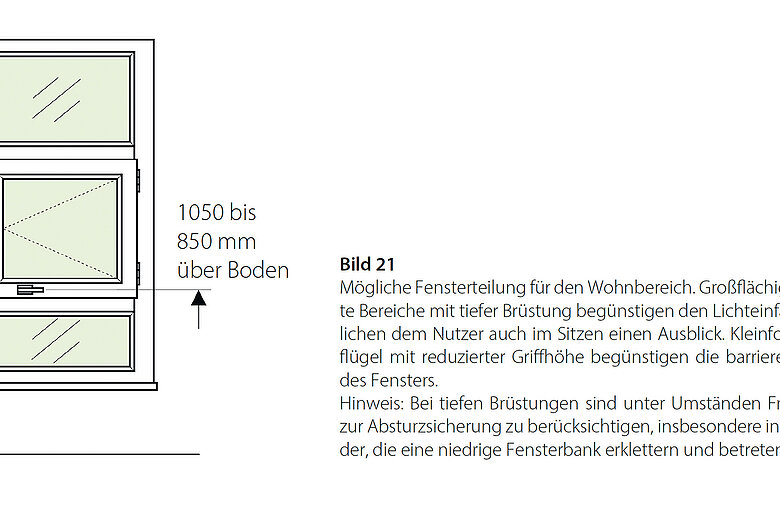Reading time: 2 minutes
ift technical information gives recommendations for the implementation of DIN 18040-2
Construction of accessible buildings affects more than 7.8 million severely disabled people in Germany. For this reason, DIN 18040-2, which has been introduced under building law, must be observed in new buildings and renovations subject to approval. This standard contains practical rules for doors. For windows, on the other hand, there are only rudimentary specifications and altogether little information on practical implementation. This gap is now closed by the ift technical information BA-02/1 “Recommendations for the Implementation of Accessibility in Residential Construction with Windows and Doors”, which is based on the results of the research project “Accessibility of Construction Elements”.
Legally, the removing of barriers is contained in the Basic Law of the Federal Republic of Germany, in the Act on the Equal Treatment of Peoples with Disabilities, in the EU Construction Products Regulation and the Building Regulations (Prototype Building Regulations/Regional Building Codes) as well as in DIN 18040-2, which was introduced into building law. In practice, however, planners and window manufacturers must develop compromises, taking into account different, sometimes contradictory, factors. Conflicting goals arise, for example, between the required low operating forces and performance characteristics such as acoustic insulation, watertightness or burglar resistance. Similarly, this applies to the threshold height of doors and French windows.
The guideline contains concrete recommendations for the execution of construction elements with regard to the actual user groups. For example, for the execution of the handles, the dimensions, the opening types or the optical design for visually impaired people. Because it makes a big difference whether doors and windows are used in a flat-sharing community of young wheelchair users, for blind persons or in a care unit for dementia patients. Here it makes sense to equip the construction elements according to the situation in order to achieve the optimum for the respective user group, if possible with low costs.
One focus is on the passability and design of thresholds. Especially for people using a rollator, even low threshold heights can be a tripping hazard or even insurmountable. In addition to the threshold height, the threshold geometry also has an influence on the rollover capability and both are included in the evaluation and classification of the rollover capability, which is defined as a parameter in ift Guideline BA-01/1. In addition, tables with a comparison of the normative requirements (DIN 18040-2) and recommendations of ift Rosenheim support the tender.
The technical information thus offers concrete recommendations and valuable practical advice for house owners, planners, manufacturers and dealers of construction elements in order to facilitate the planning, tendering and construction of private residential buildings, retirement homes and care facilities.
